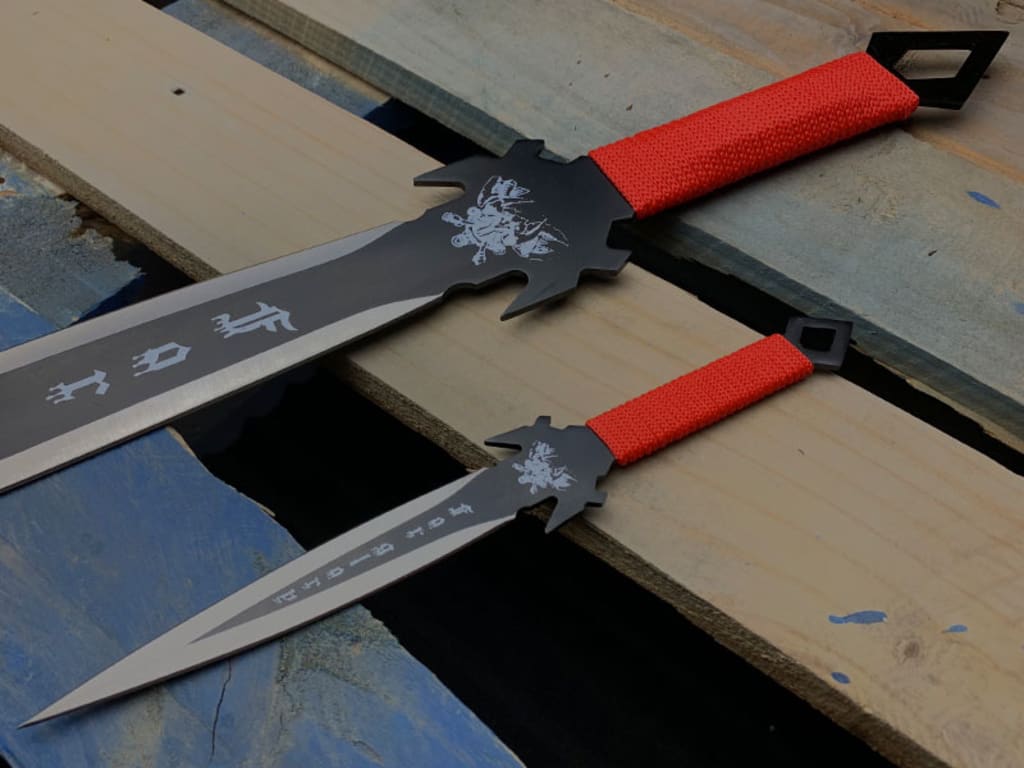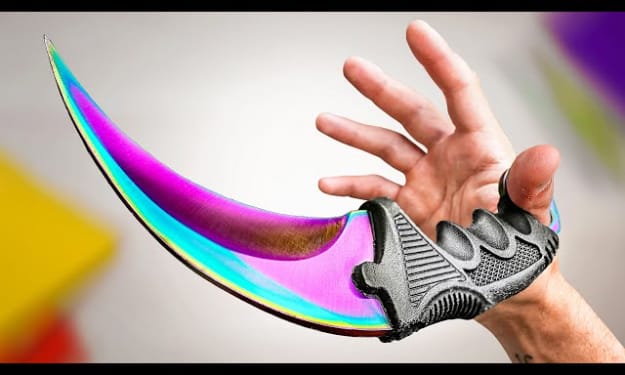Ninja Swords Unveiled: Exploring the Tools of the Shinobi
Ninja Swords

Introduction
Ninja swords, or ninjatō, have long been shrouded in mystery and legend. Associated with the covert operations and stealth tactics of the shinobi, these swords are distinct from the more commonly known samurai katana. This article delves deep into the world of ninja swords, uncovering their history, construction, types, and their place in modern martial arts and popular culture. We'll explore the techniques used in their creation, the unique features that set them apart, and offer guidance on what to look for when purchasing one. Additionally, we'll provide insights into proper maintenance and care to ensure your ninja sword remains in optimal condition.
The History of Ninja Swords
Ancient Origins of the Shinobi
The origins of the shinobi, or ninja, can be traced back to the Sengoku period (1467-1615) in Japan. This era of constant military conflict and political intrigue gave rise to the need for espionage and unconventional warfare. The shinobi were trained in various arts of stealth, sabotage, and assassination. Unlike the samurai, who adhered to a strict code of honor, the shinobi were pragmatic warriors, using any means necessary to achieve their objectives.
Development of the Ninjatō
The ninjatō, often referred to as the ninja sword, is believed to have developed during this time. While historical evidence on the exact design and use of ninjatō is sparse, they are generally depicted as shorter, straighter, and more utilitarian than the curved katana of the samurai. The design of the ninjatō was practical, allowing for quick drawing and effective use in confined spaces.
The Ninjatō in Popular Culture
In the modern era, the image of the ninja and their swords has been heavily influenced by popular culture. From movies and television shows to video games and comic books, the depiction of the ninja wielding their iconic swords has captivated audiences worldwide. This cultural fascination has led to a resurgence of interest in the historical and practical aspects of ninja swords.
Types of Ninja Swords
Traditional Ninjatō
Traditional ninjatō are characterized by their straight, single-edged blade and a shorter length compared to the katana. The blade is often less ornate, with a practical design focused on functionality. The hilt, or tsuka, is usually wrapped in simple materials such as cotton or leather, providing a secure grip. These swords were designed for stealth and efficiency, making them ideal for the covert operations of the shinobi.
Modern Interpretations
Modern interpretations of the ninjatō vary widely, with some staying true to the traditional design and others incorporating contemporary materials and aesthetics. These modern ninjatō may feature stainless steel blades, synthetic handle wraps, and custom fittings. While they may differ in appearance from historical examples, they retain the essence of the ninja sword’s practicality and versatility.
Decorative and Replica Ninjatō
Decorative and replica ninjatō are popular among collectors and enthusiasts. These swords are often designed with a focus on visual appeal, featuring intricate engravings, ornate fittings, and eye-catching designs. While they may not be suitable for practical use, they serve as beautiful display pieces and tributes to the legacy of the ninja.
The Construction of Ninja Swords
Blade Material and Forging Techniques
The blades of traditional ninjatō were typically made from high-carbon steel, similar to the katana. The forging process involved heating, folding, and hammering the steel to remove impurities and create a strong, flexible blade. Modern ninjatō may use various types of steel, including stainless steel and Damascus steel, each offering different qualities in terms of sharpness, durability, and appearance.
Differential Hardening
Differential hardening is a key technique used in the construction of ninja swords. This process involves heating the blade and then cooling it at different rates to create a hard edge and a softer spine. The result is a blade that is both sharp and resilient, capable of withstanding the rigors of combat while maintaining a keen edge.
Blade Design and Geometry
The design and geometry of the ninjatō blade are crucial to its effectiveness. Unlike the curved katana, the ninjatō features a straight blade, which is advantageous for thrusting and quick, direct strikes. The blade length is typically shorter, ranging from 20 to 24 inches, allowing for greater maneuverability in tight spaces. The point of balance is often closer to the guard, facilitating rapid, controlled movements.
Handle (Tsuka) and Fittings
The handle, or tsuka, of a ninjatō is designed for a secure grip and ease of use. Traditional handles were wrapped in materials such as cotton, leather, or ray skin (samegawa), providing a comfortable and non-slip grip. The fittings, including the guard (tsuba), pommel (kashira), and collar (fuchi), were often made from iron or brass. Modern ninjatō may use synthetic materials and contemporary designs for added durability and aesthetic appeal.
Scabbard (Saya)
The scabbard, or saya, of a ninjatō is an important aspect of its overall design. Traditional scabbards were made from wood and lacquered for protection against the elements. The saya often featured a simple, utilitarian design, in line with the ninja’s need for stealth and practicality. Modern scabbards may incorporate materials such as plastic or fiberglass for enhanced durability and weather resistance.
Techniques and Training with Ninja Swords
Drawing and Cutting Techniques
The quick draw, or iai, is a fundamental technique in the use of the ninjatō. The shorter blade and straight design allow for rapid unsheathing and cutting in a single, fluid motion. This technique is essential for surprise attacks and self-defense in close-quarters combat. Training in drawing and cutting techniques focuses on precision, speed, and control, ensuring that the shinobi can effectively engage their target with minimal exposure.
Stealth and Concealment
Stealth and concealment are core principles of ninjutsu, the martial art practiced by the shinobi. The ninjatō was often carried in a way that allowed for easy concealment and quick access. Techniques for stealthy movement, silent approaches, and efficient strikes were integral to the ninja’s training. Modern practitioners of ninjutsu continue to emphasize these principles, adapting ancient methods to contemporary contexts.
Combat Applications
In addition to stealth and quick-draw techniques, the ninjatō was used in various combat applications. The straight blade is effective for thrusting, slashing, and parrying, making it a versatile weapon in both offensive and defensive situations. Training in combat applications includes drills, sparring, and kata (pre-arranged forms) to develop proficiency in handling the ninjatō in various scenarios.
Modern Ninjutsu and the Ninjatō
Today, ninjutsu is practiced by martial artists around the world, preserving the techniques and philosophies of the ancient shinobi. Modern ninjutsu schools, such as the Bujinkan, offer training in the use of the ninjatō, along with other traditional ninja weapons and techniques. Practitioners learn the historical context of the ninjatō, as well as its practical applications in self-defense and martial arts.
What to Look for When Buying a Ninja Sword
Authenticity and Quality
When purchasing a ninja sword, authenticity and quality are paramount. Look for swords made by reputable manufacturers or skilled swordsmiths who use high-quality materials and traditional forging techniques. Authentic ninjatō should exhibit characteristics such as a well-balanced blade, a secure handle, and attention to detail in the fittings and scabbard.
Blade Material and Construction
The blade material and construction play a crucial role in the performance and durability of a ninja sword. High-carbon steel and Damascus steel are popular choices for their strength and sharpness. Ensure that the blade has undergone proper forging and differential hardening processes to achieve the desired balance of hardness and flexibility.
Balance and Handling
A well-balanced ninjatō is essential for effective use. The balance point should be close to the guard, allowing for quick and precise movements. The weight of the sword should be appropriate for the user's strength and skill level, ensuring that it is comfortable to wield during training and practice.
Handle and Fittings
The handle, or tsuka, should provide a secure and comfortable grip. Look for handles wrapped in traditional materials such as cotton, leather, or ray skin, and ensure that the wrap is tight and well-executed. The fittings, including the guard, pommel, and collar, should be made from durable materials and fit securely without any wobbling or looseness.
Aesthetic and Personal Preference
While functionality is key, the aesthetic appeal of the ninjatō is also an important consideration for many buyers. Choose a sword that resonates with your personal preferences in terms of blade finish, handle wrap, and overall design. Whether you prefer a traditional, minimalist look or a more ornate, decorative style, select a ninjatō that you will be proud to own and display.
Where to Buy Ninja Swords
Specialty Sword Shops
Specialty sword shops, both online and physical, offer a wide selection of ninja swords. These shops often carry high-quality, authentic ninjatō made by skilled swordsmiths. The staff at specialty sword shops are typically knowledgeable and can provide valuable advice and recommendations based on your needs and preferences.
Martial Arts Suppliers
Martial arts suppliers often carry ninjatō designed for training and practical use. These suppliers understand the specific requirements of martial artists and can offer swords that meet the standards for practice and performance. Purchasing from a martial arts supplier ensures that you are getting a sword suitable for training in ninjutsu or other martial arts disciplines.
Conclusion
Ninja swords, with their rich history and distinctive design, continue to captivate martial artists and enthusiasts alike. From the ancient shinobi who wielded these blades in the shadows to modern practitioners who preserve their legacy, the ninjatō remains a symbol of stealth, skill, and practicality. Whether you are a collector, a martial artist, or simply intrigued by the mystique of the ninja, understanding the nuances of these unique swords enhances your appreciation and knowledge.
The Legacy of the Shinobi
The legacy of the shinobi and their iconic swords endures in both historical study and modern practice. The principles of stealth, strategy, and adaptability that defined the ninja continue to inspire those who seek to learn from their techniques and philosophies. By studying the tools and tactics of the shinobi, we gain insights into a fascinating aspect of martial history and human ingenuity.
Read More: Fantasy Sting Dagger Short Sword with Scabbard
/
About the Creator
Mai Sophia
A Writer/blogger by day, a knife enthusiast and survivalist by night. I've reviewed a lot of products and have helped people make the right purchase
Enjoyed the story? Support the Creator.
Subscribe for free to receive all their stories in your feed. You could also pledge your support or give them a one-off tip, letting them know you appreciate their work.






Comments
There are no comments for this story
Be the first to respond and start the conversation.